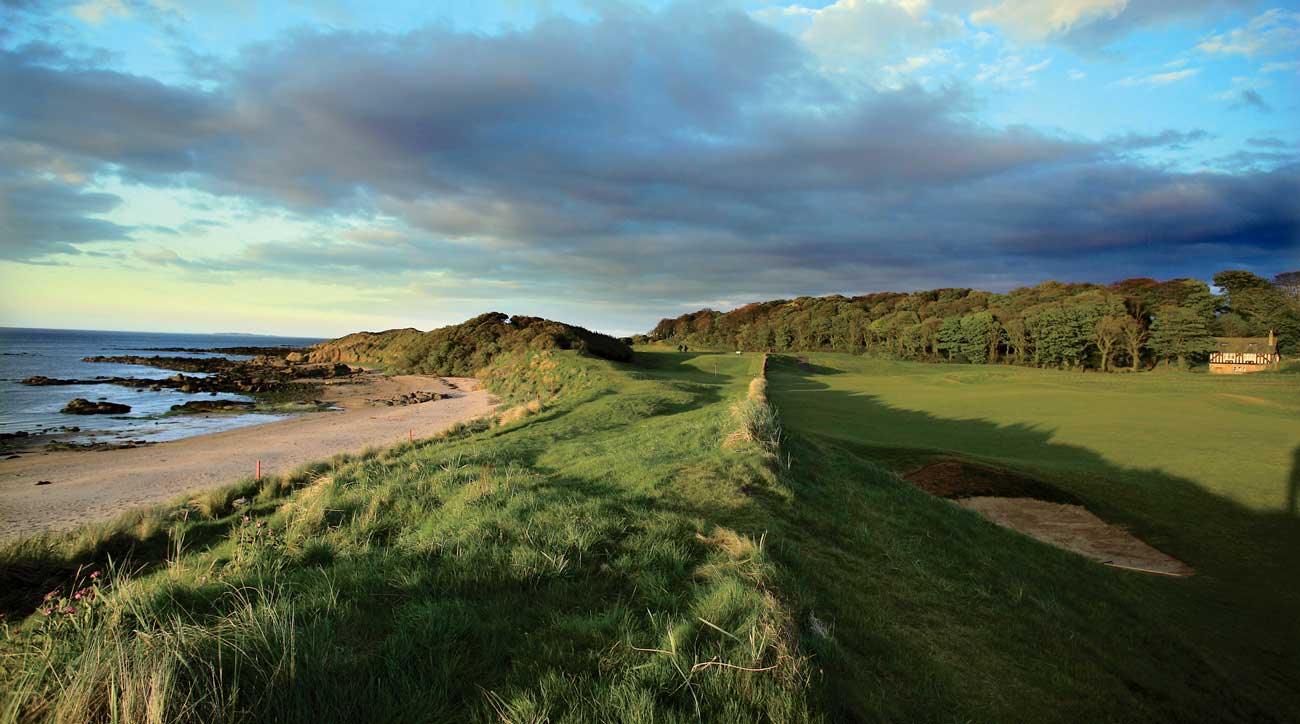 2 reasons why 2025 was one of the most important golf years … ever
2 reasons why 2025 was one of the most important golf years … ever
GOLF’s Top 100 Courses in the World: A deep dive into the rankings
You can see the complete list of GOLF’s Top 100 Courses in the World here.
I have been ranking, playing and writing about the world’s greatest courses for the better part of three decades, and though I am still relatively new to the role of architecture editor here at GOLF, I’ve intently followed and tracked the magazine’s Top 100 Courses in the World list since its inception.
What originally drew me to GOLF’s rankings (more so than those of other media outlets) was its balance. It didn’t prioritize “toughness” as a means to greatness, an en vogue assessment style in the early days of course ranking. Rather, it sought the middle ground between challenge and fun. When GOLF published its inaugural Top 100 list in 1985 (it started with a Top 50 list two years prior), you saw names like Sunningdale Old, National Golf Links of America, Chicago GC, Garden City and Somerset Hills populate the second half of the list — sublime designs that, if judged on difficulty alone, would not have made the cut. It was obvious that the GOLF panel saw the value in shot variety and affording players the chance to recover after hitting an errant shot instead of immediately penalizing them. I’m happy to report that 34 years later, the balance remains — all five of the courses mentioned above (each built prior to 1925) now reside in the Top 50.
Ultimately, what Top 100 lists do exceedingly well is stimulate conversation on design. That’s a good thing. They also reflect trends. There’s been a sea change in rater taste over the past two decades, and thus, a significant shake-up in the rank once you get past the household names in the Top 15 or so. Chalk this up to the 1997 opening of the Bill Coore/Ben Crenshaw–designed Sand Hills, which debuted at No. 17. This Midwestern marvel in the middle of Nebraska reintroduced enthusiasts to the notion that course design at its highest form — to say nothing of the game itself — has the power to connect man with nature in an extremely personal way. With its ability to test one’s full repertoire of skills while simultaneously stirring a host of emotions, Sand Hills instantly made other modern designs seem overthought and contrived. A new movement of minimalist design was dawning, and GOLF was there to trumpet the news.

Designers and developers got smart. On Sand Hills’ success, a host of predominantly treeless courses began to emerge and make their way into the ranks. In 1999, Whistling Straits and Bandon Dunes joined the list. Two years later, Pacific Dunes and Kingsbarns piled in. So it went with the modern stunners from Australia and New Zealand. Before too long, the World Top 100 was a road map of non-residential dream courses with stunning long views that lifted the spirit.
The latest entry into our Top 100 list, highlighted by its secluded, rustic yet texture-rich environment, is Ohoopee Match Club. Barely a year old, Ohoopee was seen by enough panelists and scored high enough to hit the current rank at No. 98. Located in rural eastcentral Georgia, Ohoopee mimics the likes of Sand Hills, Pinehurst and the courses at Bandon in that it plays over sandy soil, in this case courtesy of the Ohoopee River. The grace of its landforms and how the ball scampers along the ground are testaments to its soil composition, in addition to architect Gil Hanse’s soft touch.
While we take pride in highlighting new creations, older, fabled courses have made impressive moves in this year’s rank. Witness the jumps by North Berwick (+14 spots) and Prestwick (+25). Rye returns after an absence, and age-old Machrihanish continues to hang in at No. 93. Rye measures 6,503 yards and Machrihanish 6,226 yards—GOLF’s course raters don’t view length as the prime determinant of quality, and neither should you. The idea that a round should take little more than three hours to complete is gaining steam among raters, so it’s no surprise to see “short” courses that ooze character inch up the rank. Additionally, H.S. Colt courses with tight routings, like Swinley Forest (+32 spots) and first-time entrants De Pan and St. George’s Hill, surge as well. Golf is a walking sport. Our list confirms it.
Other trends show that we are indeed in a “restoration” era, as noted in the skillful work at Sleepy Hollow (unranked to No. 76), Somerset Hills (+33), Southern Hills (+20) and Myopia Hunt Club (unranked to No. 92). And let’s just say there’s a reverse-Brexit happening here, too. In 1987, 19 courses from Great Britain and Irelandmade the list. Today, there are 30, almost a 60 percent increase. Credit the influx of GB&I courses in part to the region’s climate, as it yields grasses (primarily fescue) that are conducive to firm and fast playing conditions. If a course can’t allow the golfer to use the ground to work the ball into an advantageous position, it won’t earn our panel’s affection.
Culling through past rankings and identifying trends like this helps to predict why certain courses come on — or fall off — the list next go-around. But make no mistake: There are no substitutes for a stellar site location. As Tom Doak notes in his article on No. 1 Pine Valley, architect George Crump didn’t build his dream course to sell homes. He found land cocooned in nature, across an exhilarating landscape, ideally suited to yield an authentic playing experience. Thirty-four years since our panel placed Pine Valley at the top of the list, it remains the blueprint for winning over raters.
The tapestry of great courses is vast. We take pride in our Top 100 in the World list. Same for the courses that just missed the cut. For the first time, we’re also publishing the “Next 50.” No surprise that the trends discussed here are evident in those courses waiting in the wings.
ADVERTISEMENT

MISSING THE MARK
Familiar names Baltusrol Lower and Oak Hill did not make the World Top 100, a first for both. In the case of Oak Hill, work was ongoing this past fall to expunge the non-Ross holes 5, 6 and 15 among other things. It will be incumbent on our panelists to see it over the next two years and determine if what Andrew Green accomplishes is of a similarly high level to the help he adroitly lent the Inverness Club (No. 81, up 17 spots) outside of Toledo.
Regarding Baltusrol, Gil Hanse (whose restoration work transformed many courses on the list, including Los Angeles CC and Sleepy Hollow) and his “cavemen” will soon seek to return this venerable course to the more rough-hewn state that Tillinghast originally created there.
Another potential shock for our audience is Augusta National coming in at No. 9 — its lowest-ever ranking. When the trend everywhere is to remove trees, widen playing corridors, increase playing angles and promote strategic and attacking golf, something had to give. We appreciate that Augusta National is in the uniquely difficult position of annually hosting the Masters. Still, the founding vision of Bob Jones and Alister MacKenzie matters, and a sense is starting to develop among panelists that the club is moving too far away from it.
Noteworthy, too, is that Coore & Crenshaw’s Shanqin Bay failed to the make the list for the first time since its creation. The loss of its 17th hole over property line issues with the Chinese government is to blame. (The government actually planted 900 trees in the fairway and on the green once they determined that the hole fell outside of the course’s development boundary!) One panelist considered the 17th among the finest holes in world golf, but its immediate replacement was a short flick of a par 3 that wasn’t in the same league. Now Shanqin Bay is played as a 17-hole course — an unsatisfactory outcome. Some panelists had this near the top of all Coore and Crenshaw’s creations, and we hope better news lies ahead.
Remote courses such as Lofoten Links in Norway, Ardfin on the Isle of Jura, and Himalayan Club in Nepal were scored extremely well by the handful of panelists who have played them — handful being the key word. These courses are among the most stunning in the world, and you’ll be reading much more about them as more of our panelists find their way to their far-flung locales. Just one glance at Lofoten — the creation of British architect Jeremy Turner — makes one immediately appreciate that, thankfully yes, golf is an outdoor sport. Courses with an adventurous component appear to be on the rise and why not? The more intense the connection with nature, the more life-affirming the experience.

As noted, treeless environments have been the rage the past 20 years or so, and sometimes the pendulum knocks over some iconic courses. Valderrama fell off this year’s list, and Harbour Town in 2017, yet as Winged Foot is sure to demonstrate at next year’s U.S. Open, well-placed trees certainly add value by forcing players to shape shots and control trajectory. How will our panelists react? One thing is for certain: Fine-tuning what defines great architecture is a never-ending process.
GOLF understands the importance of its world rankings, and we do everything possible to stay current. In some instances, there just isn’t enough time for a sufficient number of panelists to reach destinations where new work has been completed. Such is the case at Bel-Air, which reopened for play just four months before our balloting process closed. Nonetheless, it scored its highest grades in years, and looks primed to occupy a lofty spot when we release the U.S. Top 100 this time next year.
To receive GOLF’s all-new newsletters, subscribe for free here.
ADVERTISEMENT




